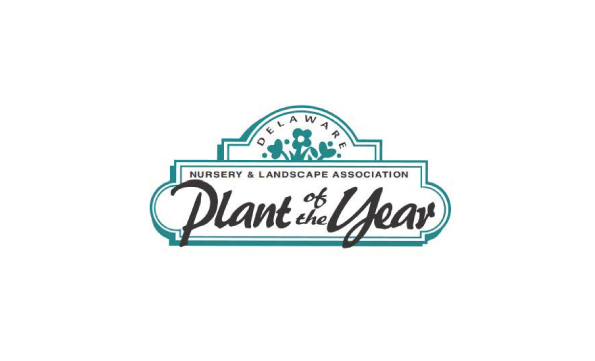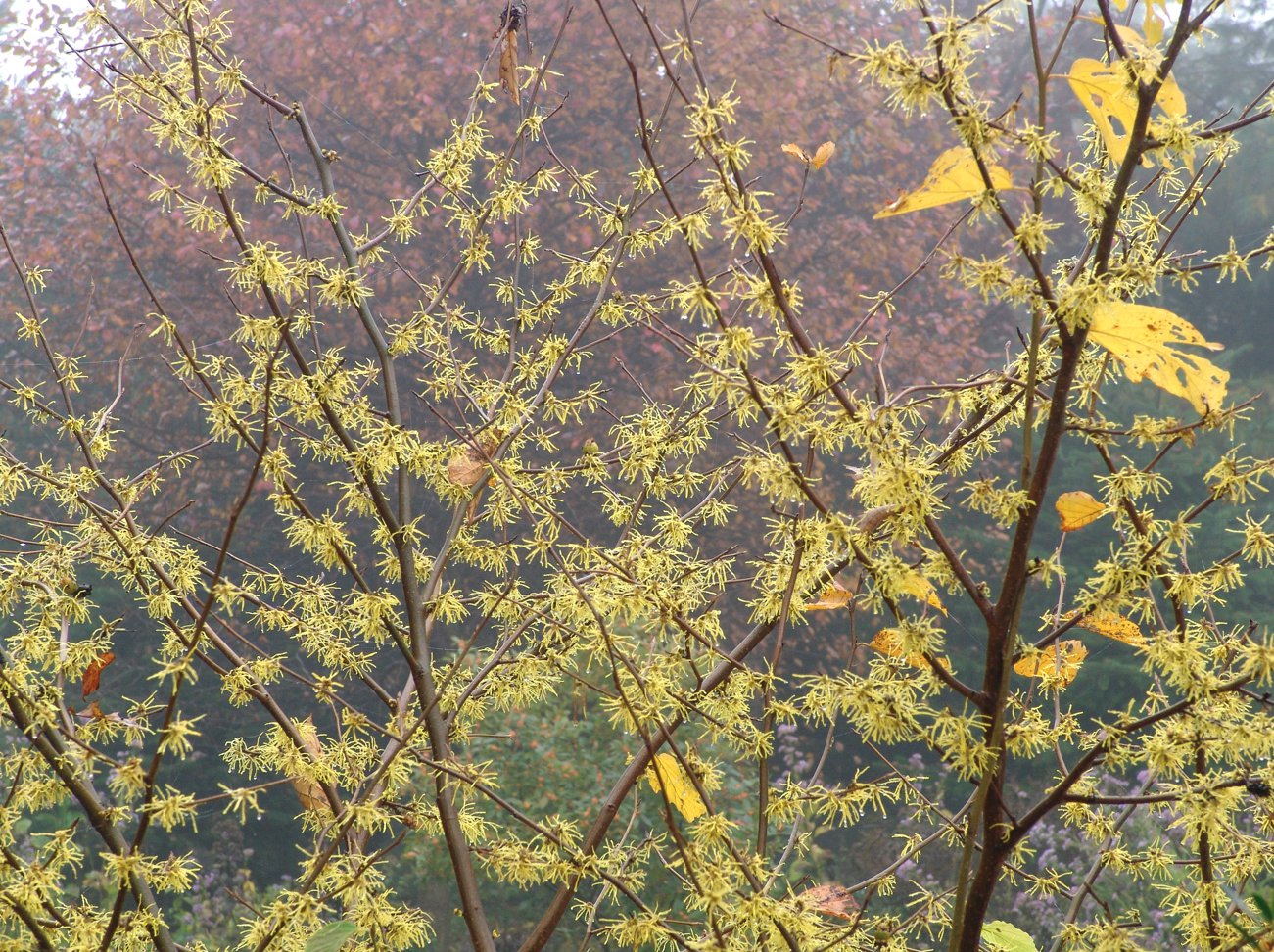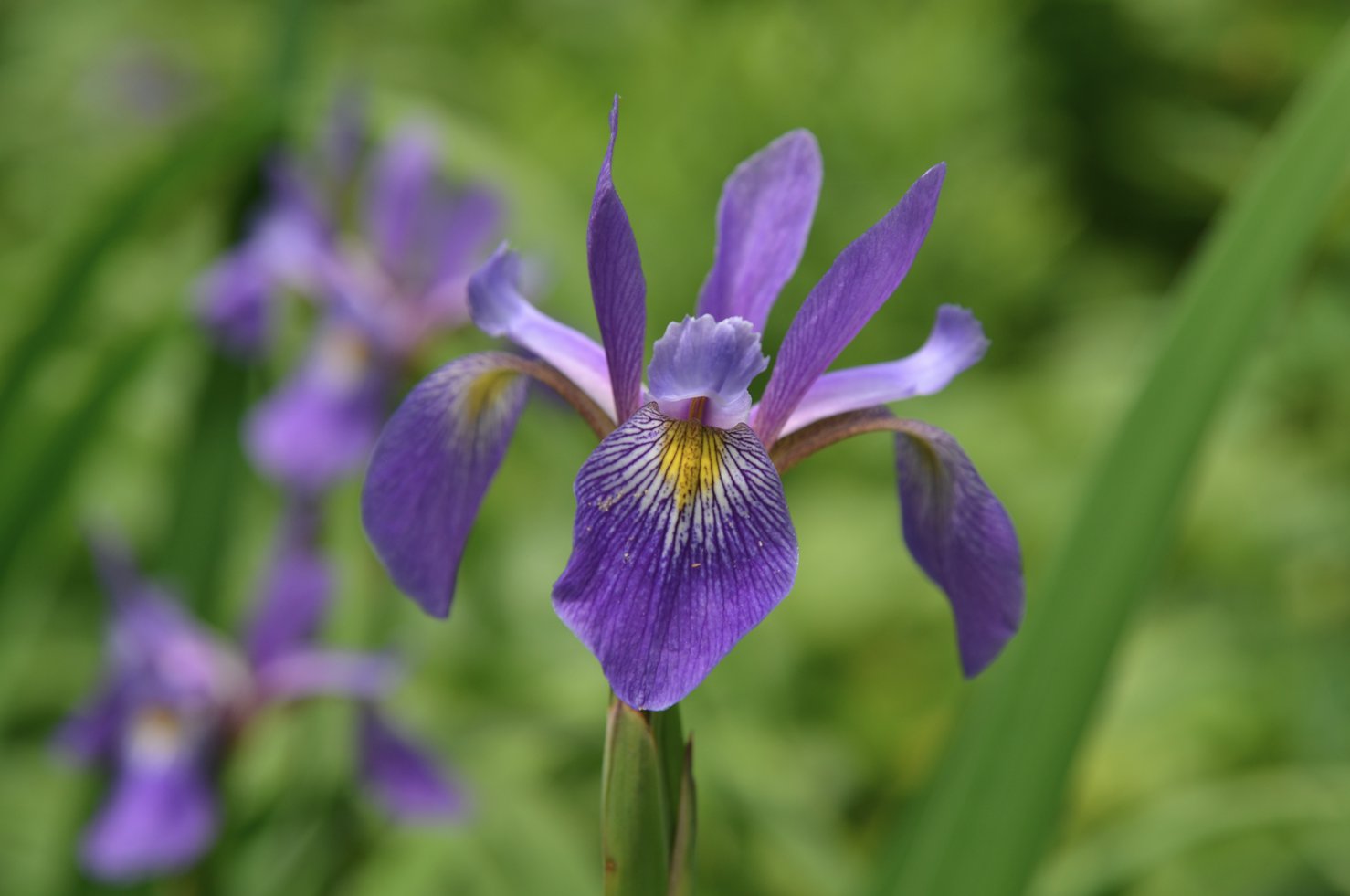
This year marks Delaware Nursery & Landscape Association’s Twenty-Eighth Annual Plant of the Year selection.
The 2022 Herbaceous plant is Iris versicolor ‘Purple Flame’. The 2022 Woody plant is Hamamelis virginiana. These plants were chosen because they are particularly well suited to thrive in Delaware.
Hamamelis virginiana Witch Hazel
Witch hazel is a beautiful native shrub or small tree that can be found growing along woodland margins and stream banks in the eastern part of North America from Canada to Mexico. In Delaware, this woody ornamental shrub flowers in late fall with cheery yellow spider-like blooms. Flowers are also described as stem-hugging clusters of fragrant bright yellow blooms, each with four crinkly, ribbon-shaped petals appearing along the branches. Leaves turn an attractive yellow color in the fall. Witch hazel can be planted in full sun to partial shade, but full sun is best for prolific flowering. Witch hazel is intolerant of drought, but tolerates heavy clay soil, erosion, and deer browse. Plant in a winter garden or along a woodland margin. Its dense canopy makes for a good spring and summer screen or tall hedge. Specimens can be pruned into small trees and used as a patio planting.

Iris versicolor ‘Purple Flame’ Blue Flag
Purple flame blue flag has been described as a “showstopper.” It has a richer, more intense cast to its stems and flowers than other iris. But the true beauty lies in the foliage that emerges in March with a vivid and intense eggplant purple color. That is followed by rich and abundant blue flowers in late spring, that attract butterflies and hummingbirds. Blade-like leaves transition to green as the weather warms. ‘Purple Flame’ is a chance mutation found by a gardener at the Mount Cuba Center. As with all Iris versicolor, it grows well beside or in water and is a great addition to stream and pond edges. ‘Purple Flame’ was an extraordinary performer in Mt Cuba’s trial gardens but should be planted where its roots receive constant moisture for the most intense foliage color. ‘Purple Flame’ is a superb specimen and is also effective as a mass. It looks good in the garden combined with Asclepias incarnata, Lobelia cardinalis, Packera aurea, Caltha palustris, and Clethra alnifolia.
Photo credit goes to Rick Darke for all images.

